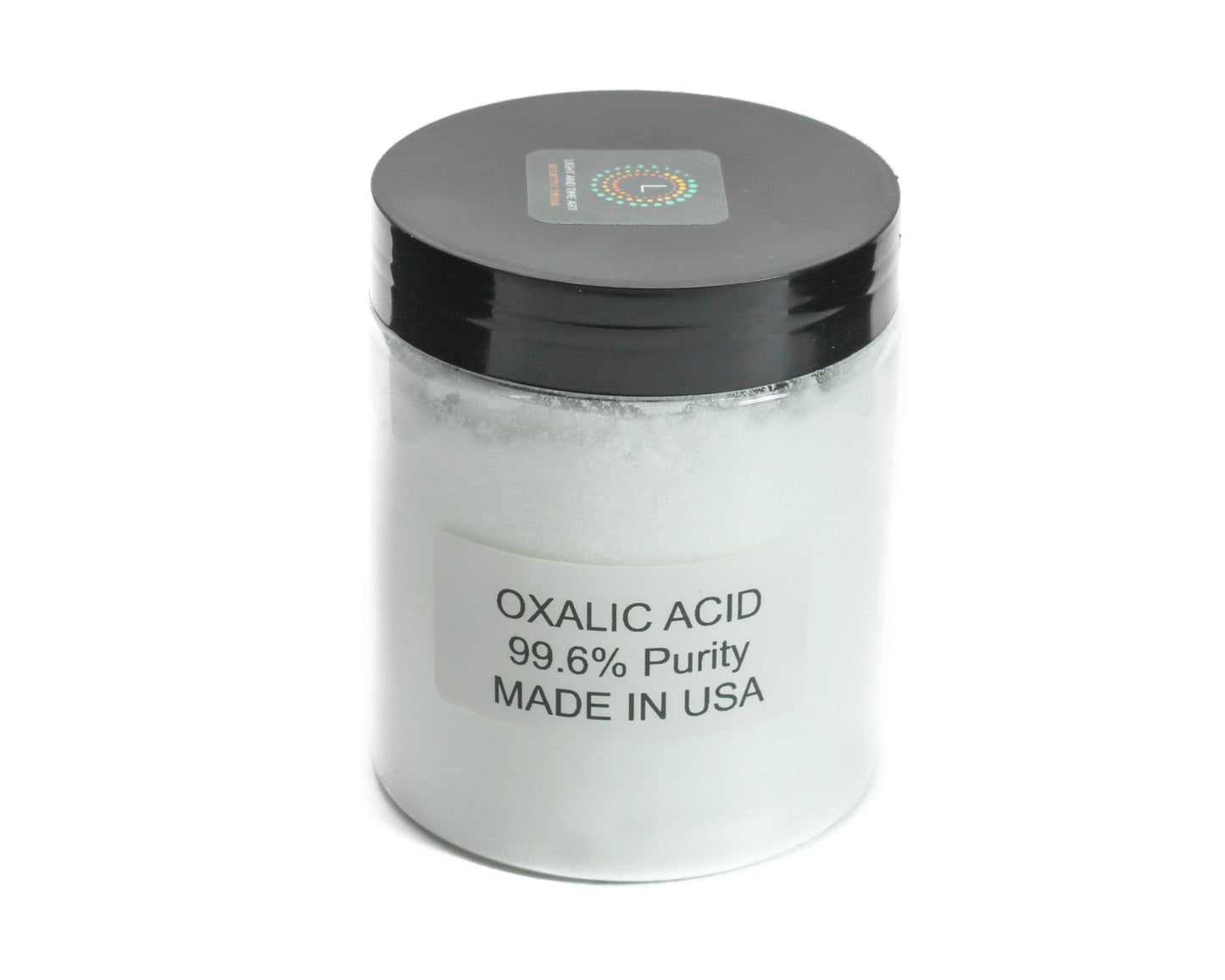Florida Laboratories, Inc
Oxalic Acid 99.6% Crystals for Insulator Cleaning
Oxalic Acid 99.6% Crystals for Insulator Cleaning
Couldn't load pickup availability
8 oz (1/2 lb.) - 99.6% pure oxalic acid (wood bleach) crystals.
Packaged in Plastic Jar with Screw-On Lid for convenient ability to open and close after each use.
An easy way for removing train soot and the tough dirt and grime from insulators.
Just mix with water in a plastic bucket, not a metal one, as the acid will eat metal!
More info: Cleaning Your Insulators
Made in the USA
Cautions
Do not use oxalic acid to clean carnival glass, flashed amber, or use it on soft glass such as the Hemingray E-14B's and D-510's in opalescent milkglass. The Mexican CD 133.5 Tel Fed Mex seems to be made of very soft glass and is affected by oxalic acid. The acid will take any coatings off an insulator including carnival and flashed amber.
Warning:
- Keep away from Children
- If in contact with skin or eyes, wash with running water
- If inhaled, move the person to fresh air.
- If ingested, drink water to dilute material in the stomach.
- Use Gloves and Protective Mask.
After you cleaned your insulators get some of my lamp bases to convert them into beautiful lights.
Outdoors:
- Multicolor Outdoor Solar Lamp Base for "Hemingray-9 and Hemingray-10
- Low Voltage LED Landscape Lights Lamp Base for "Hemingray-16 and Hemingray-17I
Indoors:
- Lamp Base for "Hemingray-42" Glass Insulators
- Lamp Base for "Hemingray-10, 12, AM. TEL." Glass Insulators
- Lamp Base for "Hemingray-16, Hemingray-17" Glass Insulators
- Lamp Base for "Hemingray №16 - CD 121" Glass Insulators
- Lamp Base for "Hemingray-9" Glass Insulators
- Lamp Base for "Hemingray-56" Glass Insulators
- Lamp Base for "PYREX C17" Glass Insulators
Dimensions
Dimensions
Diameter: 2.75 inches
Height:3.5 inches
History
History
Share


-
Glass Insulators
Glass insulators were first produced in the 1850's for use with telegraph lines. As technology developed insulators were needed for telephone lines, electric power lines, and other applications. In the mid 1960's a few people began collecting these antique glass insulators. Today there are over 3,000 insulator collectors.
-
“CD” NUMBERS
All glass pintype insulators are classified in what is called the “CD Numbering” system of identification. This system was created and used by N.R. “Woody” Woodward, an early pioneer, researcher and author in the field of collecting glass insulators. The CD (Consolidated Design) numbers basically identify insulators by their shape and profile, regardless of exact embossed markings, glass color, or base type.

